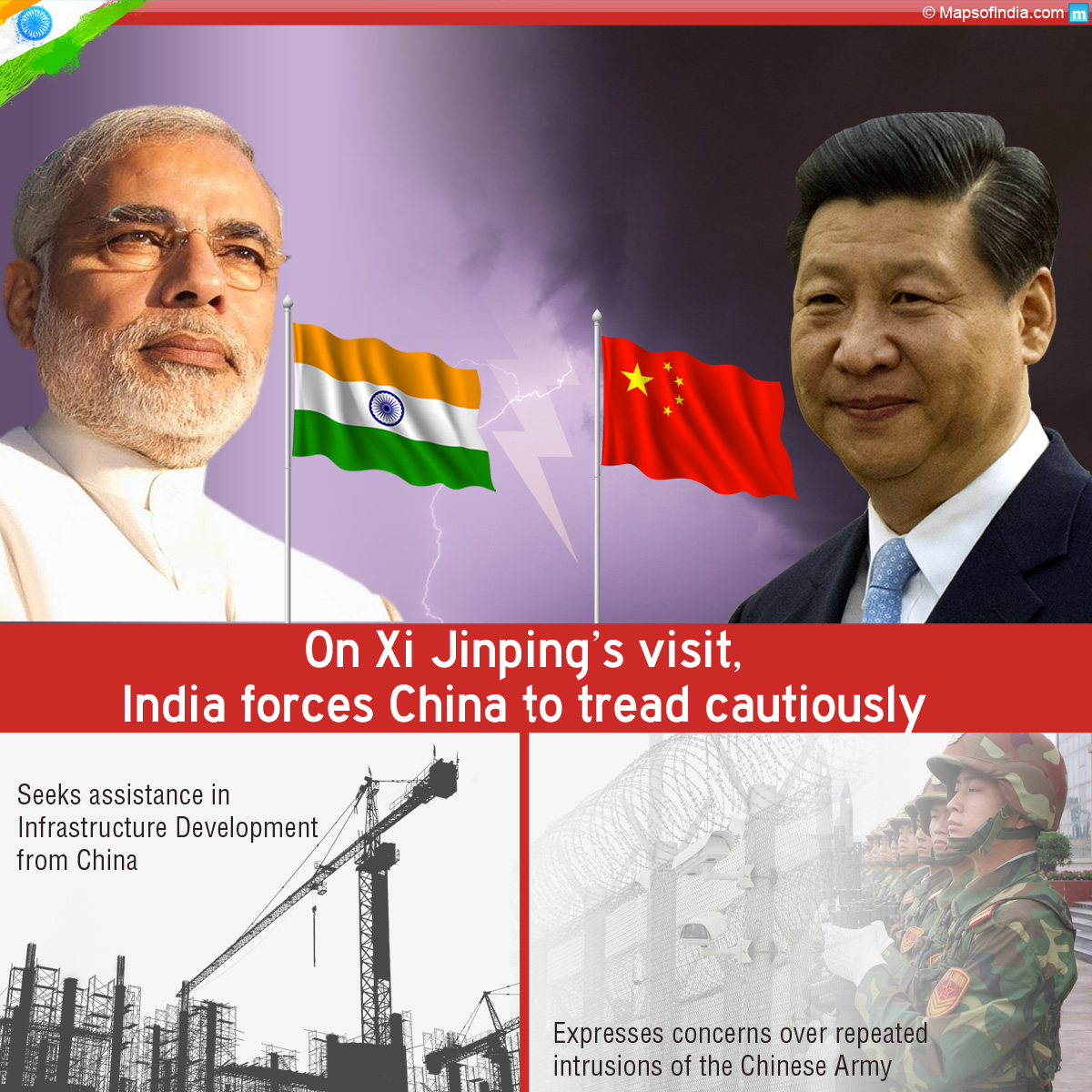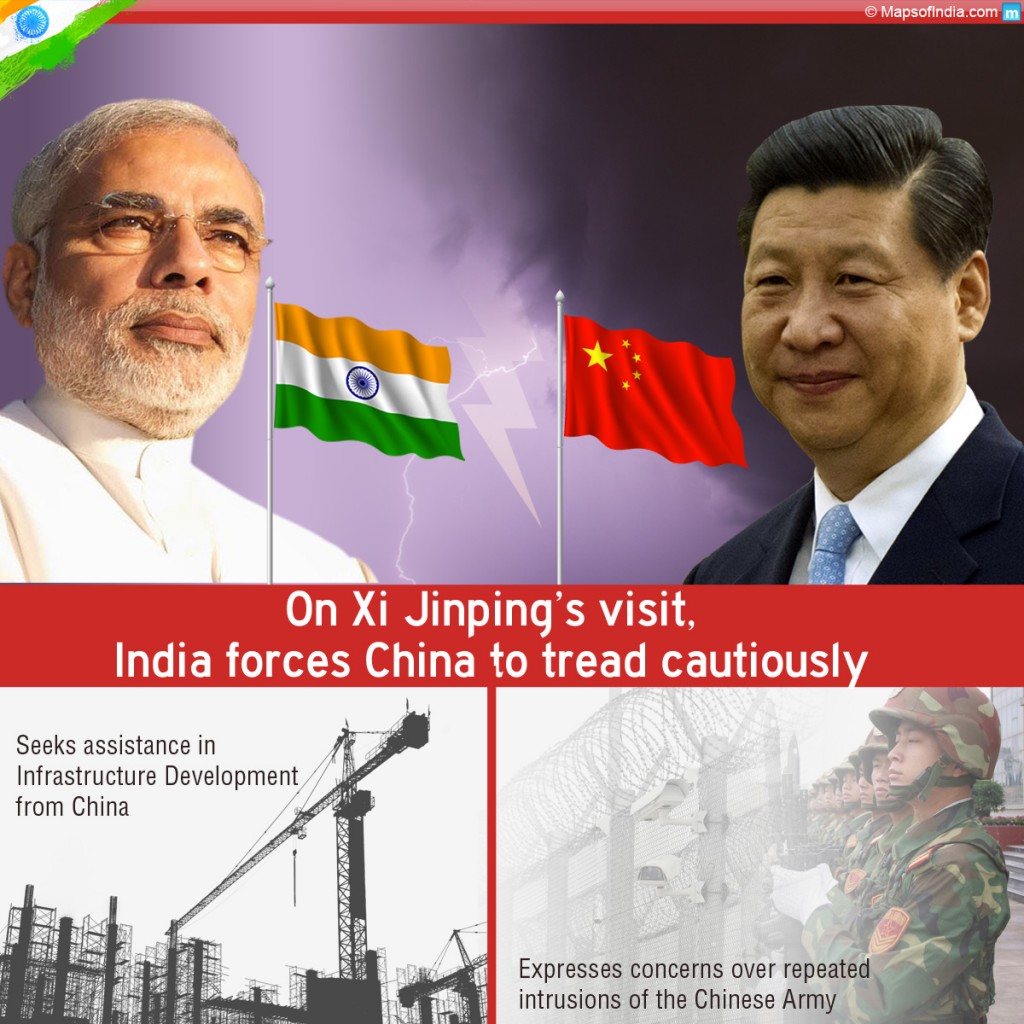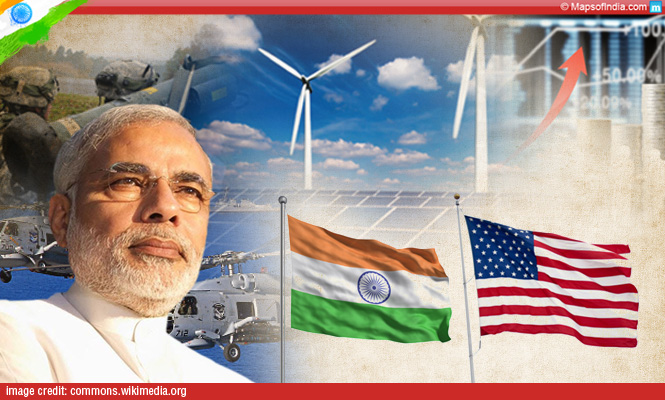Even as Prime Minister Narendra Modi tearing apart protocol left New Delhi for Ahmedabad to receive Chinese President Xi Jinping and his wife Peng Liyuan and gave a guided tour to the Gandhi Ashram and the Sabarmati river bank, the high-profile visit got overshadowed by incursions into Indian territory by the Chinese army.
This was markedly felt during his second leg of New Delhi visit, where India and China despite signing a total 15 agreements (excluding three agreements signed in Ahmedabad) and China making a commitment for $20 billion worth of investments, the bonhomie between two leaders was tempered with formalities. “I raised our serious concern over repeated incidents along the border. We agreed that peace and tranquility in the border region constitutes an essential foundation for mutual trust and confidence and for realizing the full potential of our relationship,” Narendra Modi said during the joint press conference with the visiting Chinese dignitary at Hyderabad House in New Delhi.
This expression of concern couched in diplomatic language was enough to indicate that the trust gap between the two nations was yet to be over. In fact, putting words like “concern” in a joint statement gave a broad hint that India was not happy – despite President Xi Jingping’s assurance learnt to have been given to Narendra Modi in Ahmadabad that “a message has been passed on to the PLA” to disengage from the Ladakh region.
Inconsistency in China’s stand
Experts say that if the Chinese President who happens to be his country’s paramount leader with all civilians as well as military powers vested in him, passes on any message to 1.5 million PLA’s chief and it remains unattended, then it is an intriguing phenomenon. They say the PLA chief can’t sidestep order from his boss which the Chinese President is. There is chicanery and it smacks of inconsistency in China’s stand in its engagement policy towards India, which has also experienced in the past about Beijing giving it sharp pin pricks prior to the Chinese leaders’ India visit. It happened prior to Chinese Premier Li Keqiang’s visit too in May last year. Intrusion of the Chinese troops at Depsang valley and their stay put there for more than three weeks, had created military and diplomatic tensions between the two nations. It took place a few days prior to the Chinese Prime Minister’s maiden visit to India.
Also, in 2006, diplomatic ripples were created when Beijing resurrected claims over Arunachal Pradesh. This happened prior to the then Chinese President Hu Jintao’s visit. Similarly, before Premier Wen Jiabao’s much publicised trip to India in 2010, China began issuing visas on loose paper stapled into the passports of residents from Jammu and Kashmir applying for visa for China. Coinciding the timing of these incidents with high level visits from China, is a clear indication that Beijing doesn’t want India to rest in peace. This is clear from the fact present before India’s security agencies.
Counter measures by India
More than 300 incidents of incursions by the Chinese troops have been reported from January to September 17, 2014. A total 1,619 incidents of PLA intrusions have been reported from 2009 to 2014. This shows China’s bullying tactics. In fact, through its infrastructure build-up in Tibet and aggressive patrolling, China is compelling India to invest in matching this posture, which means fewer resources are left for New Delhi to counter China’s economic and military challenges. But India under stronger leadership of Modi has a plan up New Delhi’s sleeve. This time around too, India-China joint statement was not allowed to echo with “One China” policy. Then prior to President Xi Jinping’s arrival, President Pranab Mukherjee went to Vietnam, China’s arch enemy. Of the seven agreements signed between India and Vietnam during President Mukherjee’s Hanoi visit, one is on purchase of defence equipments. Vietnam has shown interest for Brahmos missile, a joint product of India and Russia defence partnership. Then ONGC Videsh has got oil blocks for exploration in the South China Sea – all this to the annoyance of China.
Indian tactics force China to tread diplomatic path cautiously
But while all this goes on, New Delhi’s main focus is to bring economy back on the rail. To this regard, it has already pushed up economic reforms. Major job creating sectors like defence and railways-have been thrown open for investments. Infrastructure development is given the boost. Amidst a dozen agreements signed during Xi Jinping’s visit, one is on cooperation between the two nations on development of the high-speed railway corridors. For the beginning, Chinese will help commission the Chennai-Bangalore-Mysore corridor and help augment train speed from 130 kmph to 160 kmph. China will also invest in two industrial parks in Gujarat and Maharashtra. For this, it has agreed to allocate $6.8 billion. Experts feel that together with Beijing’s commitment to pump in $20 billion and Japan’s pledge to extend $35 billion worth of investments in India, there will be a huge surge in economic growth in the country. In fact, aim is to register 8 to 9 per cent growth by 2016. Once it happens, New Delhi’s confidence will receive a boost. And to assist it, India will require cutting-edge technology.
During Prime Minister Modi’s Japan visit, apart from seeking assistance in development of infrastructure, India sought cutting-edge technology for space, defence, nuclear and railways from Tokyo. This process continued with China too with which, to the surprise of strategic community, the two countries signed agreements on space and nuclear cooperation. Likelihood of replication of the same strategy with the US is in the air. In the course of the much hyped visit of Modi to the US in the last week of September, India will not only go for deeper trade engagement between the two nations, it will also seek the Americans assistance in giving top-notch technology for biology, agriculture, defence, space and others.
In a nutshell, aim is to end the phase of disappointments and policy paralysis seen during the Manmohan Singh government’s second spell. Along with this, New Delhi wants to give spike to its strategic and tactical consideration. In response to China’s design to push the Maritime Silk Road initiative, which aims to create an interlocking commercial web in the Indian Ocean Region to keep India occupied in its own maritime neighbourhood, New Delhi has launched “Project Mausam” with aim to engage with the littoral countries directly. This way India is developing its response mechanism vis-à-vis China, the fire-spitting dragon which, contrary to Indian media perception of investing $100 billion in India, extended only $20 billion worth of investment. Nonetheless, India’s leadership under Modi is giving China reason to tread New Delhi’s path cautiously.






